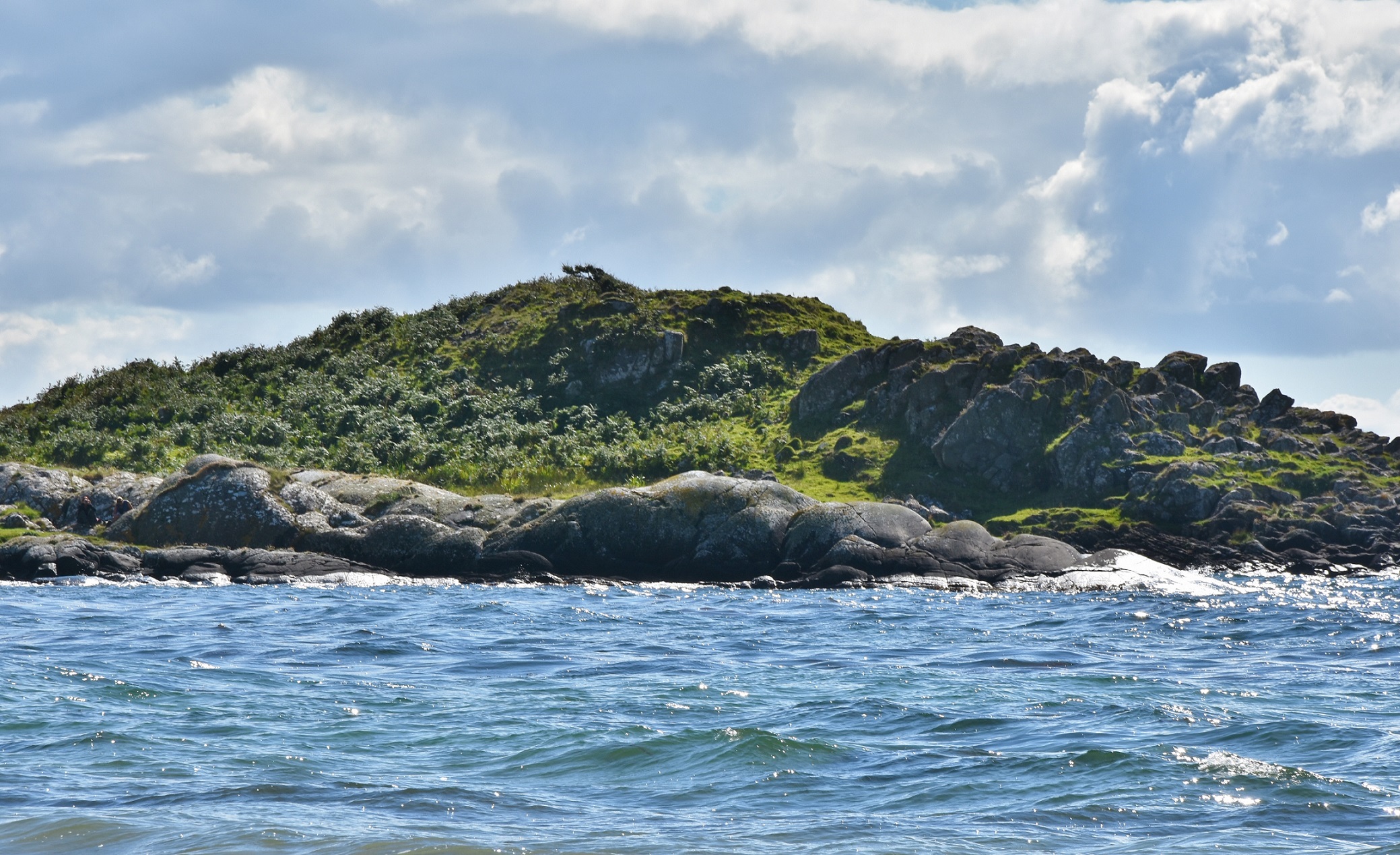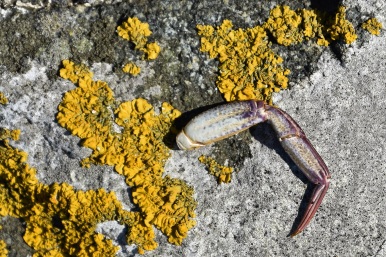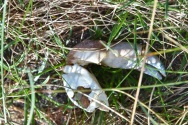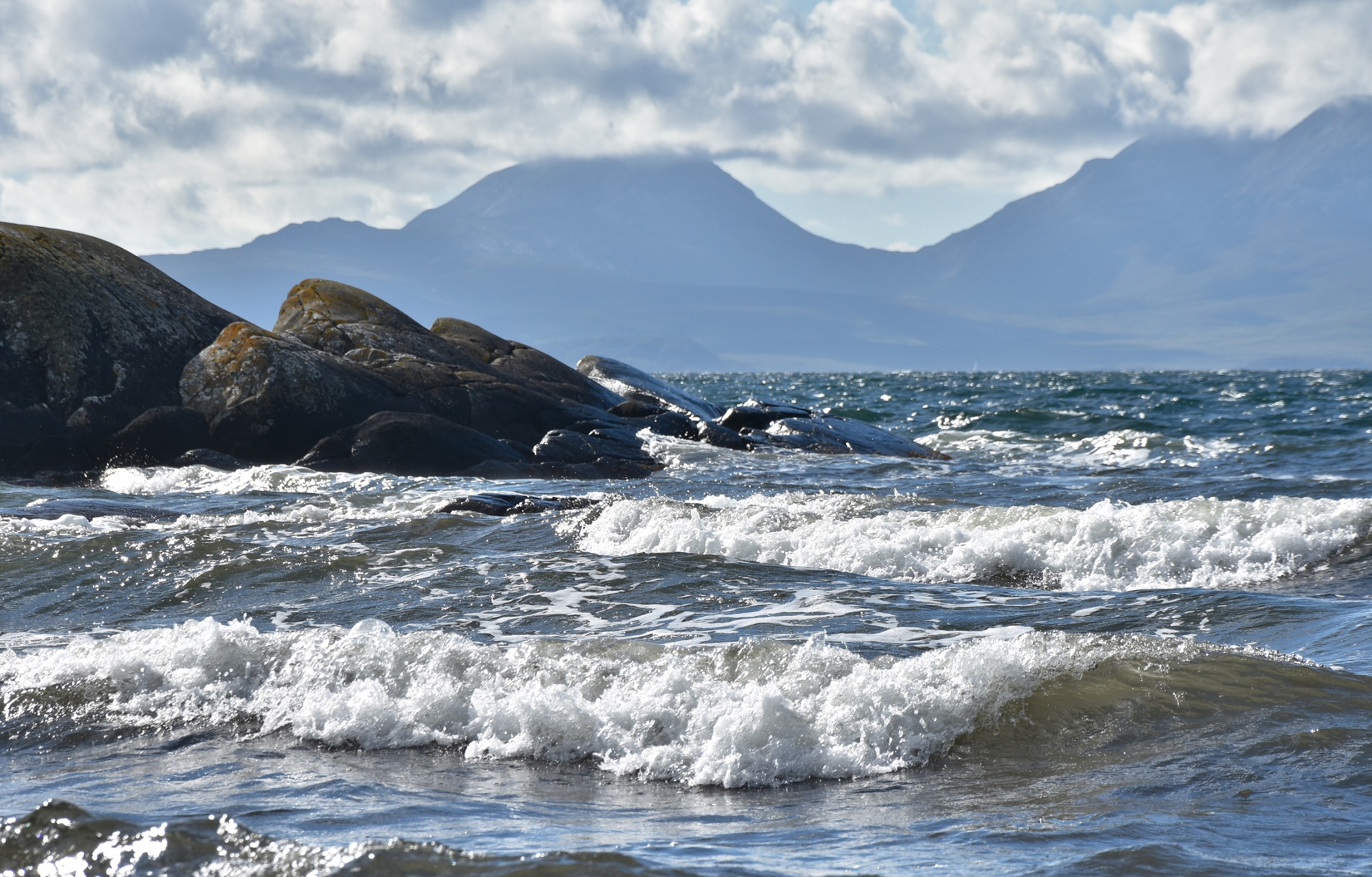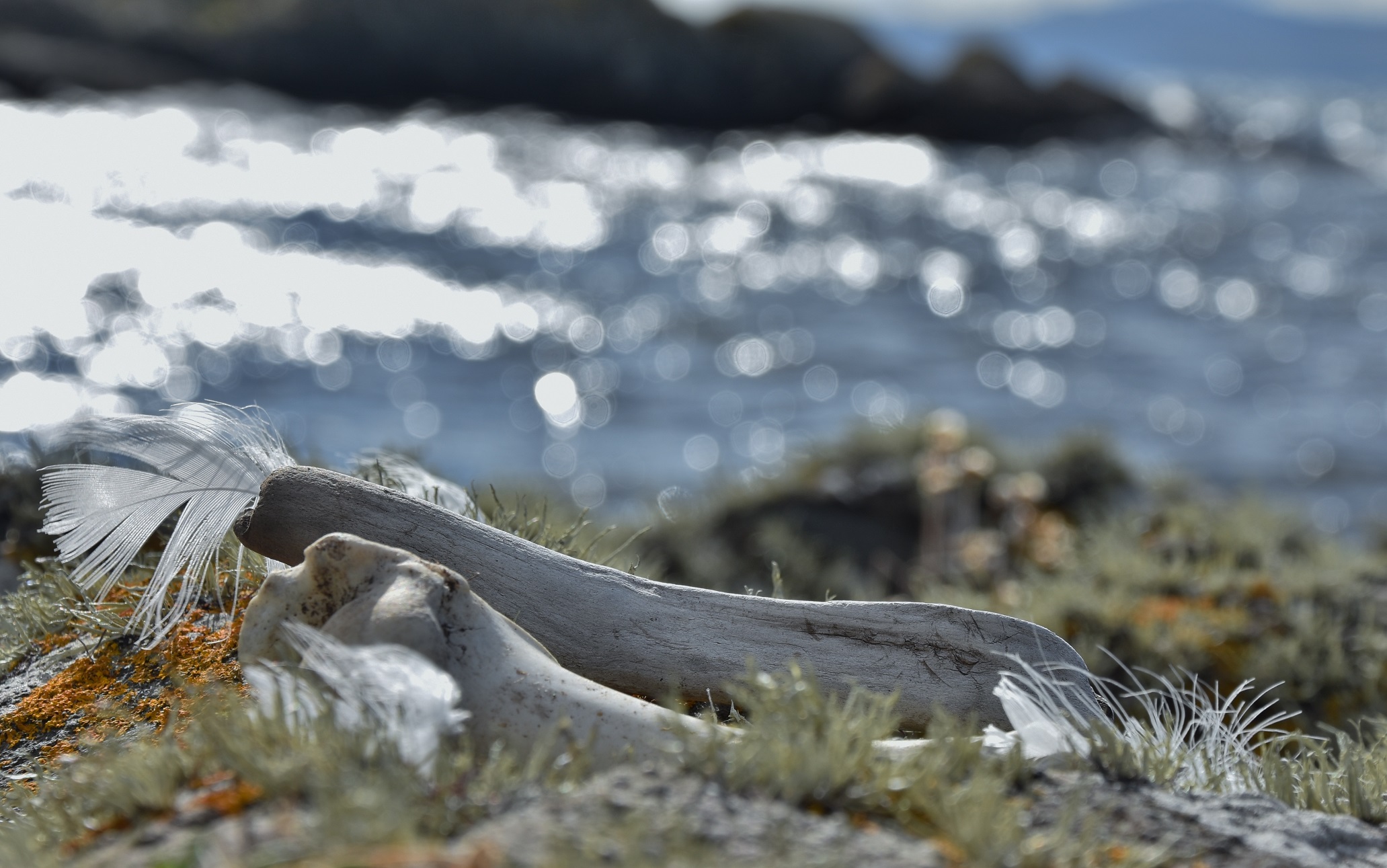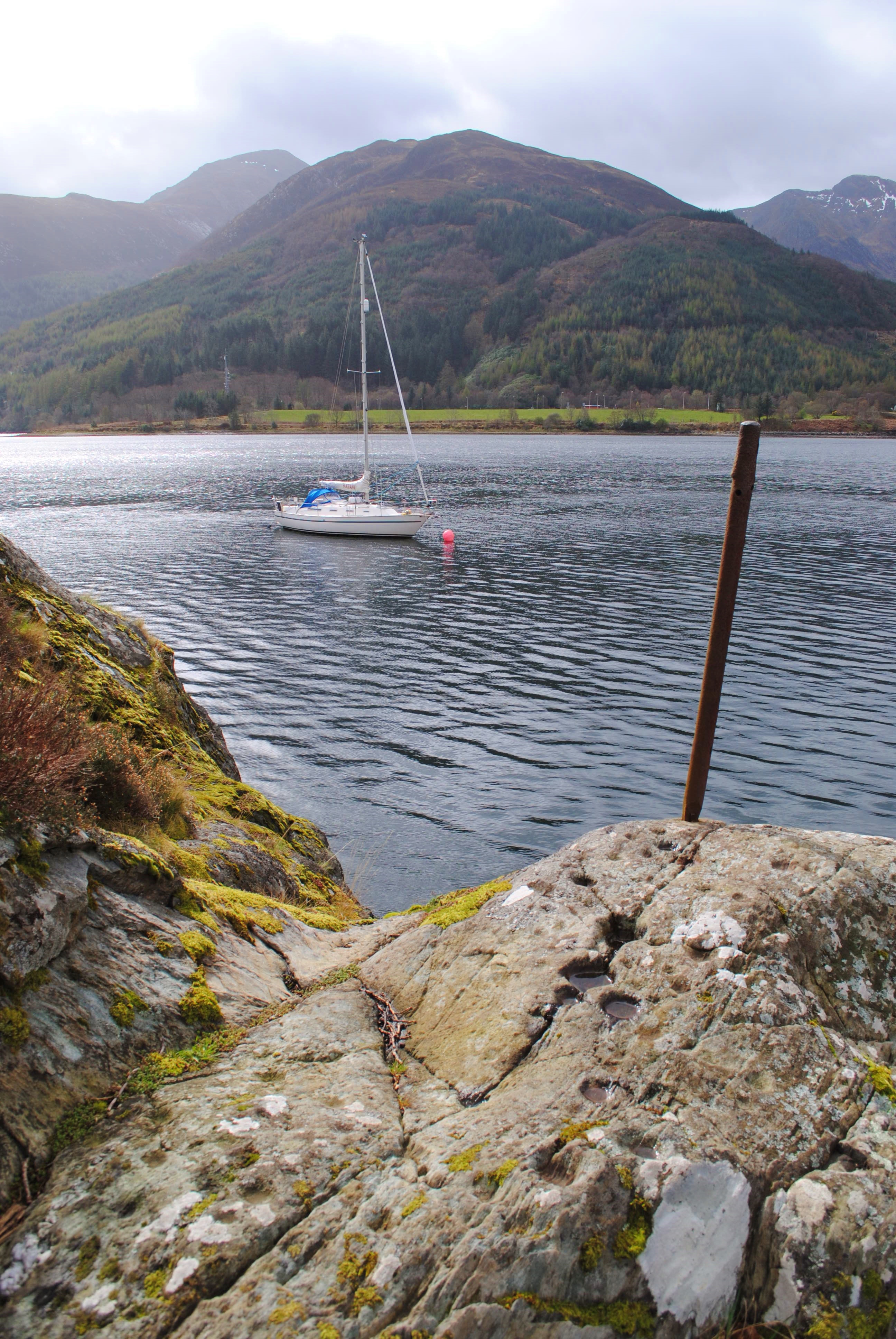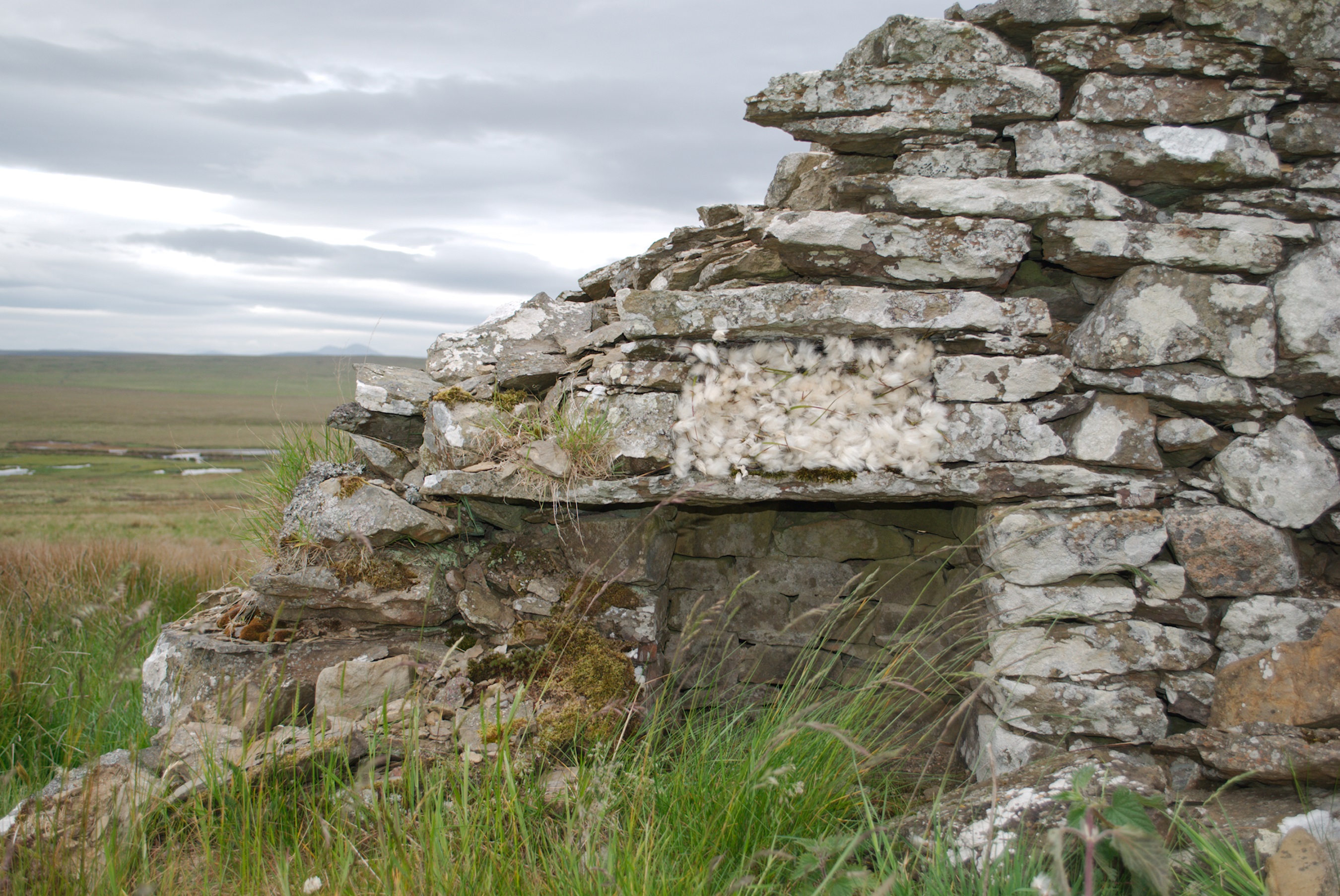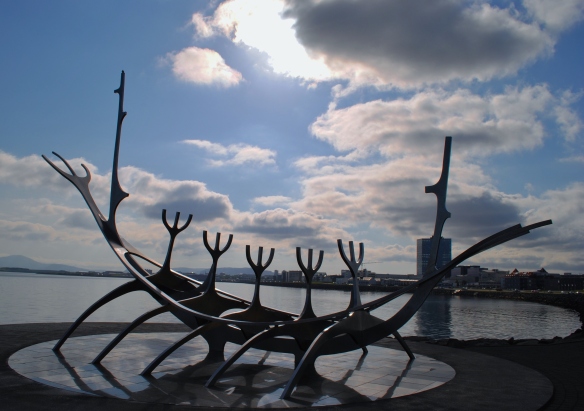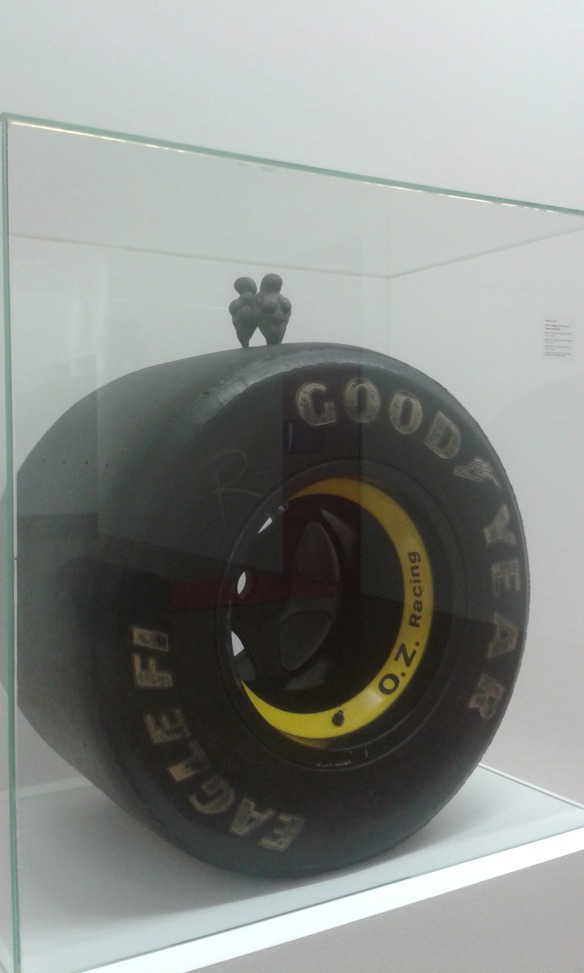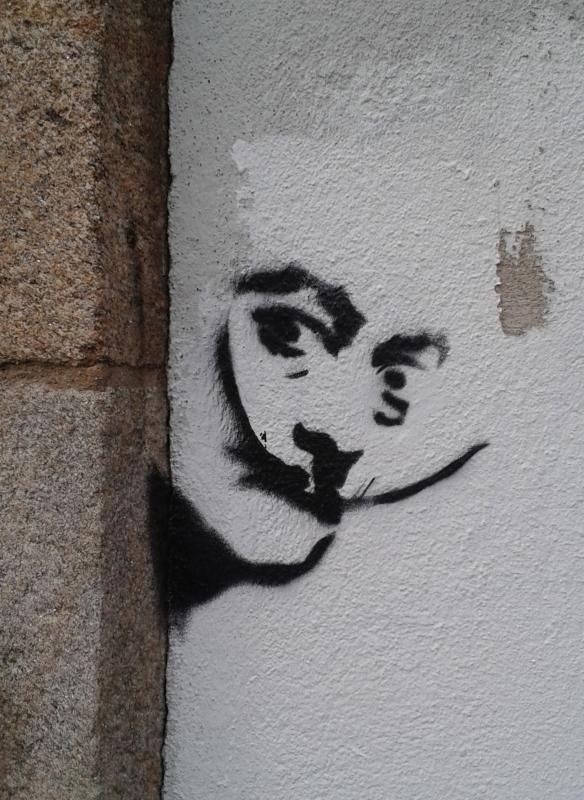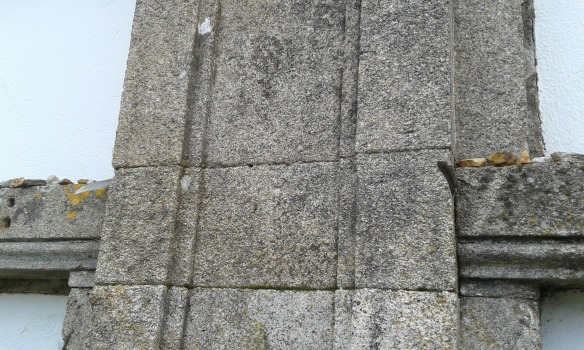
Travel to the Isle of Arran, from the River Clyde, south past the Isle of Bute to gain a different perspective on the Firth of Clyde. It highlights, how past people may have understood the seascapes of the lochs and rivers of this part of Scotland, through longer journeys. For those able to travel across moody waters, dangerous: yet when returning with rare materials and stories of different places, empowering.
For the past few years I have been encouraging collaboration on the research of the Neolithic of the Isle of Arran but set in a wider context of how its megalithic sites can be related to Ireland and Orkney. As well as it’s remarkable archaeological heritage, Isle of Arran is also renowned for its geoheritage – from Hutton’s Unconformity to Dinosaur Footprints there is much to see.
What brings the stories of Arran’s archaeology and geology most sharply together is the role of pitchstone. The only significant source of volcanic glass like material in Scotland, it was used by people from at least the fifth millennium BC for the production of sharp edged tools. During the fourth millennium BC, people exchanged pitchstone across much of what was to become described as Northern Britain. Best known among the huge range of locations of Pitchstone on Arrran is Corriegills. According to the Book of Arran, Corriegills may relate to Norse words, Korfa (Raven) and Gil (Gulley). Situated to the south of Brodick Bay (derived from Norse Broad-Bay) and Lamlash Bay (the location of at least two Viking Age burials), Corriegills runs below a range of crags and raised beaches. For 30 years I thought I knew what to expect when I visited this location – the site of ‘Neolithic Quarries’: a neo-industrio-complex of value extraction, a node of desire and dispersal. I expected quarry faces and spoil heaps – and yes, if you seek the, they may be present.
Yet once again I was surprised.

Dark shattered glass hiding in the shoreline grasses,
an arched dark spine glistens:
suddenly imagined panther-like form, hunting Goat Mountain.
Travel further towards the headland, Clauchlands, looming above is the hillfort of Dun Fionn. As you approach the headland, the slopes covered in sea storm distorted birch and hazel, the old red sandstone shoreline has been sculpted.

Along precarious coast, there are marks of meaning which resonate through the millennia.

Between the green algae coastal pools, pock marked face, dimpled, cup-mark forms – along the sea eroded stone ridges. To the casual archaeologist, a remarkable assemblage of rock art. There was no mistaking these simple metaphoric forms.


As the shore narrows, the eye is drawn to an upright stone – monolith, it russet form resting upon two large black pitchstone boulders. Then turn, find different perspectives – distant mountain, Goatfell, calls the eye. Yet look again,

see how the foreground changes everything, when Corriegills form reveals,
Awaken, Sleeping Giant.
————————————————————————————————————————
I will leave others to judge, such as the experts with Arran Geopark, whether this stone has been worked to create a head like form or whether it is a natural rock splitting phenomenon encountered by my Pareidoliac tendencies. More important perhaps is when this form was first created and / or recognised: I doubt this is the first time it has been woken.

In one scenario, the head may be a fanciful relatively recent addition to the shore line. In another, it may have been created, with suggestion of helmeted form, to watch the seascapes of the Firth of Clyde, perhaps bearing witness to Norse longships. Or is it possible that when people traveled to this shore to gather pitchstone that this face was already present?
One thing is sure, with Climate Change, this giant will witness major changes over the next few generations – I wonder what it will do now it has been woken?
For some more interesting stone heads in the Clyde Region have a look at this earlier blog post: Borne of Stone
For more information on Pitchstone sources from Arran, there is a good Scottish Archaeological Internet Reports article by Torben Ballin and John Faithfull.




















